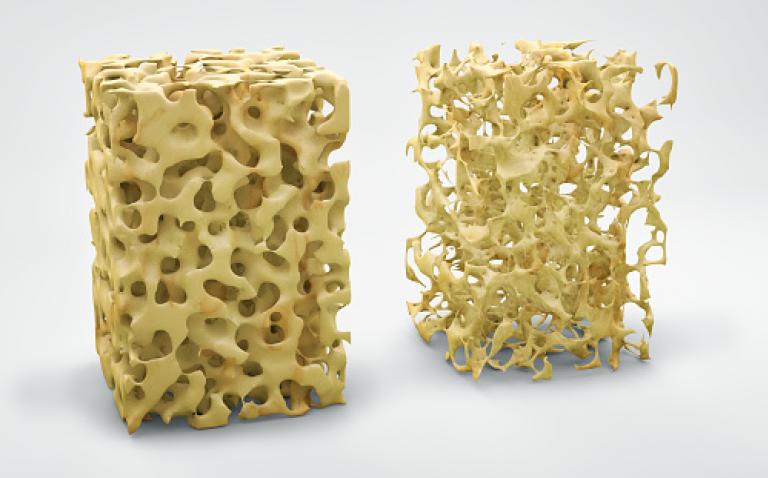UCB and Amgen have announced detailed results from the Phase III ARCH study showing that 12 months of romosozumab followed by alendronate was superior in reducing new vertebral, clinical, non-vertebral and hip fracture risk in postmenopausal women with osteoporosis at high risk for fracture, compared with alendronate alone.
Overall adverse events and serious adverse events were generally similar between the treatment groups with the exception of the previously reported imbalance in positively adjudicated cardiovascular serious adverse events. The results were simultaneously published in the New England Journal of Medicine (NEJM) and presented today as a late-breaking abstract at an oral scientific session at the Annual Meeting of theAmerican Society for Bone Mineral Research (ASBMR) in Denver.1
The study found that through 24 months, postmenopausal women with osteoporosis in the romosozumab treatment group experienced a statistically significant 48.0% relative reduction in the risk of a new vertebral (spine) fracture compared with those receiving alendronate alone (6.2% versus 11.9%, respectively [p<0.001]). At primary analysis, women in the romosozumab treatment group also experienced a statistically significant 27.0 percent relative reduction in the risk of clinical fractures (including non-vertebral and clinical vertebral fractures) compared to women receiving alendronate (9.7% versus 13.0%, respectively).
“The ARCH study shows that romosozumab can provide superior fracture risk reduction over alendronate, a commonly used, first-line osteoporosis treatment,” said study lead author Kenneth F. Saag, MD, MSc, professor of medicine at the University of Alabama at Birmingham School of Medicine. “By sharing the detailed results of efficacy and safety, we aim to help clinicians understand the potential future benefit:risk profile of romosozumab and its potential as a treatment option for postmenopausal women living with osteoporosis.”
At primary analysis, postmenopausal women in the romosozumabtreatment group experienced a statistically significant 19.0% relative reduction in the risk of non-vertebral fractures (8.7% versus 10.6%, respectively [p=0.04]). A 38.0% relative reduction in the risk of hip fractures was also observed (2.0% versus 3.2%, respectively [nominal p=0.015]), when compared to those receiving alendronate alone.
Postmenopausal women who received romosozumab achieved greater gains in bone mineral density (BMD) from baseline at all measured sites and at all time points of the study versus those receiving alendronate alone. At month 12, the percentage change from baseline was greater with romosozumab versus alendronate at the lumbar spine (13.7% versus 5.0%, respectively [p<0.001]) and total hip (6.2% versus 2.8%, respectively [p<0.001]). In a subset of patients assessed every six months, significant gains were observed beginning at month six (p<0.001) for all sites.
Overall, adverse events and serious adverse events were generally similar between the treatment groups. An imbalance in adjudicated cardiovascular serious adverse events was observed during the 12-month period in 50 patients (2.5%) treated with romosozumab versus 38 patients (1.9%) treated with alendronate, with cardiac ischaemic events and cerebrovascular events accounting for the imbalance.
The percentage of patients with adverse events and serious adverse events throughout the study as well as in the initial 12-month romosozumabtreatment period were balanced between the groups, including incidences of osteoarthritis, hypersensitivity, cancer and hypocalcemia. Injection site reactions, mostly mild in severity, were reported in 4.4% of patients in the romosozumab treatment group and 2.6% in the alendronate group during the initial 12-month period.
During the open-label alendronate period, there were two positively adjudicated events of osteonecrosis of the jaw, one in a patient treated with romosozumab followed by alendronate and one treated with alendronate alone. There were six patients with positively adjudicated events of atypical femoral fracture during the open-label alendronate period, two patients treated with romosozumab followed by alendronate and four treated with alendronate alone.
Reference
- Saag K, Petersen J, Brandi ML, et al. Romosozumab or alendronate for fracture prevention in women with osteoporosis. N Engl J Med 2017; DOI: 10.1056/NEJMoa1708322










